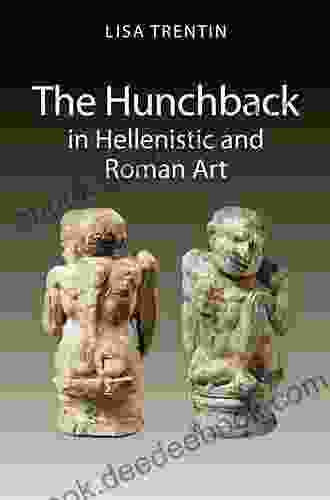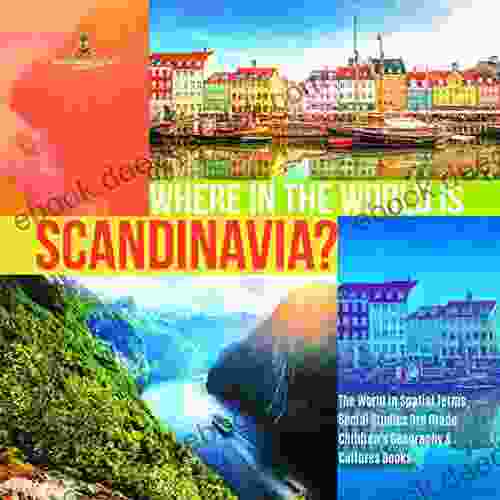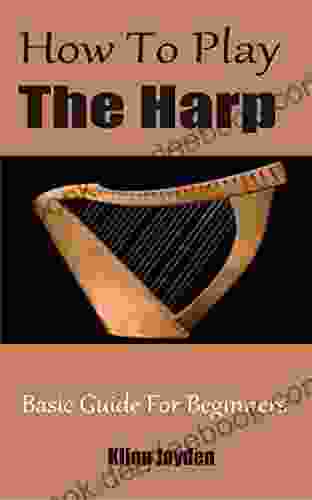The Dance: Historic Illustrations of Dancing Illustrated

4.2 out of 5
| Language | : | English |
| File size | : | 8300 KB |
| Text-to-Speech | : | Enabled |
| Screen Reader | : | Supported |
| Enhanced typesetting | : | Enabled |
| Word Wise | : | Enabled |
| Print length | : | 60 pages |
| Lending | : | Enabled |
By [Author's Name]
The dance is one of the oldest and most universal forms of human expression. It is a way to communicate, to celebrate, to mourn, and to simply enjoy oneself. Dancing has been depicted in art for centuries, providing us with a glimpse into the history of this fascinating art form.
The Ancient World
The earliest known depictions of dance date back to the Stone Age. These images, found in caves and on rock carvings, show people dancing in a variety of poses and styles. Some of these dances may have been ritualistic in nature, while others may have been simply for enjoyment.
In ancient Egypt, dance was an important part of religious ceremonies and festivals. The Egyptians believed that dancing could bring them closer to the gods and goddesses. They also believed that dancing could help to heal the sick and to ward off evil spirits.
In ancient Greece, dance was considered to be a form of art. The Greeks believed that dancing could express the emotions and ideas in a way that words could not. They developed a number of different dance forms, including the hoplite dance, the Pyrrhic dance, and the kordax dance.
In ancient Rome, dance was primarily used for entertainment. The Romans loved to watch dance performances, and they often held dance competitions. Some of the most popular dance forms in ancient Rome included the pantomime, the ballet, and the gladiatorial dance.
The Medieval Period
During the Middle Ages, dance was often frowned upon by the Church. The Church believed that dancing was sinful and could lead to immorality. However, dancing continued to be popular among the people, and it was often performed at weddings, feasts, and other social gatherings.
In the 14th century, a new type of dance emerged called the estampie. This dance was characterized by its fast tempo and complex footwork. The estampie was very popular among the nobility, and it was often performed at court balls.
In the 15th century, a new type of dance emerged called the basse danse. This dance was characterized by its slow tempo and stately movements. The basse danse was very popular among the middle and upper classes, and it was often performed at weddings and other formal occasions.
The Renaissance
The Renaissance was a time of great cultural change, and dance was no exception. During this period, dance became more secular and less religious. It was also during this time that the first professional dance companies were formed.
One of the most popular dance forms during the Renaissance was the pavane. This dance was characterized by its slow tempo and graceful movements. The pavane was often performed at court balls and other formal occasions.
Another popular dance form during the Renaissance was the galliard. This dance was characterized by its fast tempo and lively steps. The galliard was often performed at weddings and other festive occasions.
The Baroque Period
The Baroque period was a time of great opulence and extravagance, and dance reflected this trend. During this period, dance became more elaborate and spectacular. It was also during this time that the first ballet companies were formed.
One of the most popular dance forms during the Baroque period was the minuet. This dance was characterized by its slow tempo and elegant movements. The minuet was often performed at court balls and other formal occasions.
Another popular dance form during the Baroque period was the gavotte. This dance was characterized by its fast tempo and lively steps. The gavotte was often performed at weddings and other festive occasions.
The Romantic Period
The Romantic period was a time of great emotional expression, and dance reflected this trend. During this period, dance became more expressive and dramatic. It was also during this time that the first Romantic ballets were created.
One of the most popular dance forms during the Romantic period was the waltz. This dance was characterized by its slow tempo and graceful movements. The waltz was often performed at balls and other social gatherings.
Another popular dance form during the Romantic period was the mazurka. This dance was characterized by its fast tempo and lively steps. The mazurka was often performed at weddings and other festive occasions.
The Modern Period
The Modern period is a time of great experimentation and innovation in dance. During this period, dance has become more diverse and eclectic than ever before. It is also during this time that the first modern dance companies were formed.
One of the most popular dance forms during the Modern period is the jazz dance. This dance was characterized by its fast tempo and syncopated rhythms. The jazz dance was often performed at nightclubs and other entertainment venues.
Another popular dance form during the Modern period is the ballet. This dance was characterized by its slow tempo and graceful movements. The ballet was often performed at opera houses and other theaters.
The dance is a beautiful and expressive art form that has been enjoyed by people for centuries. The history of dance is long and varied, and it reflects the changing social and cultural values of different eras. Today, dance continues to be a popular and vibrant art form, and it is enjoyed by people of all ages and backgrounds.
References
- The Dance: A Cultural History by Curt Sachs
- The History of Dance by Lincoln Kirstein
4.2 out of 5
| Language | : | English |
| File size | : | 8300 KB |
| Text-to-Speech | : | Enabled |
| Screen Reader | : | Supported |
| Enhanced typesetting | : | Enabled |
| Word Wise | : | Enabled |
| Print length | : | 60 pages |
| Lending | : | Enabled |
Do you want to contribute by writing guest posts on this blog?
Please contact us and send us a resume of previous articles that you have written.
 Book
Book Chapter
Chapter Genre
Genre Reader
Reader Library
Library Paperback
Paperback E-book
E-book Magazine
Magazine Bookmark
Bookmark Bibliography
Bibliography Foreword
Foreword Preface
Preface Annotation
Annotation Manuscript
Manuscript Scroll
Scroll Codex
Codex Tome
Tome Narrative
Narrative Biography
Biography Autobiography
Autobiography Reference
Reference Narrator
Narrator Character
Character Librarian
Librarian Card Catalog
Card Catalog Stacks
Stacks Periodicals
Periodicals Research
Research Lending
Lending Reserve
Reserve Reading Room
Reading Room Rare Books
Rare Books Interlibrary
Interlibrary Literacy
Literacy Study Group
Study Group Dissertation
Dissertation Awards
Awards Reading List
Reading List Theory
Theory Textbooks
Textbooks Norman Lebrecht
Norman Lebrecht Myka Ramos
Myka Ramos Mark Phillips
Mark Phillips Reissue Edition Kindle Edition
Reissue Edition Kindle Edition Filippo Bonini Baraldi
Filippo Bonini Baraldi Kelli Rodriguez
Kelli Rodriguez Chenell Parker
Chenell Parker Joe Salerno
Joe Salerno C Fred Alford
C Fred Alford Margaret Levi
Margaret Levi Jon Knokey
Jon Knokey Joey L Dowdy
Joey L Dowdy Donald B Doty
Donald B Doty Tammie Rogers
Tammie Rogers Helen Prejean
Helen Prejean James Gow
James Gow Sinan Antoon
Sinan Antoon Sonia Coco
Sonia Coco B Scott Christmas
B Scott Christmas Wendy Kaminer
Wendy Kaminer
Light bulbAdvertise smarter! Our strategic ad space ensures maximum exposure. Reserve your spot today!
 Thomas PowellFollow ·12.1k
Thomas PowellFollow ·12.1k Edison MitchellFollow ·8.8k
Edison MitchellFollow ·8.8k Ivan TurnerFollow ·4.6k
Ivan TurnerFollow ·4.6k Tony CarterFollow ·5.1k
Tony CarterFollow ·5.1k Rex HayesFollow ·3.8k
Rex HayesFollow ·3.8k Garrett BellFollow ·15.5k
Garrett BellFollow ·15.5k Mario Vargas LlosaFollow ·17.3k
Mario Vargas LlosaFollow ·17.3k Elliott CarterFollow ·8.4k
Elliott CarterFollow ·8.4k

 E.E. Cummings
E.E. CummingsThe Routledge International Handbook on Fear of Crime
Fear of crime is a serious problem that can...

 Fletcher Mitchell
Fletcher MitchellThe Hunchback in Hellenistic and Roman Art: A...
The hunchback, or kyphosis, is a physical...

 Victor Turner
Victor TurnerA Comprehensive Guide to Needle Felting for Moms:...
Needle felting, a captivating craft...

 Joseph Foster
Joseph FosterWhere is Scandinavia?
Scandinavia is a region in...

 Leon Foster
Leon FosterNovel Shades of Magic: A Masterpiece of Magical...
An Enthralling...
4.2 out of 5
| Language | : | English |
| File size | : | 8300 KB |
| Text-to-Speech | : | Enabled |
| Screen Reader | : | Supported |
| Enhanced typesetting | : | Enabled |
| Word Wise | : | Enabled |
| Print length | : | 60 pages |
| Lending | : | Enabled |













